#Order: Diptera
Explore tagged Tumblr posts
Text


Range: much of North America
#poll#Class: Insecta#Order: Diptera#Family: Syrphidae#Genus: Toxomerus#Toxomerus Marginatus#Range: Nearctic#Range: Neotropical#bug tw#insect tw
38 notes
·
View notes
Text
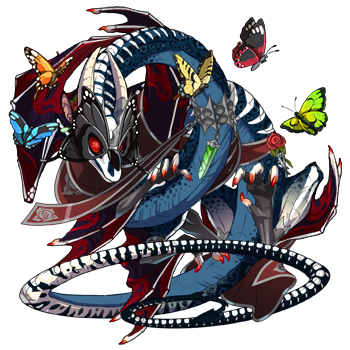
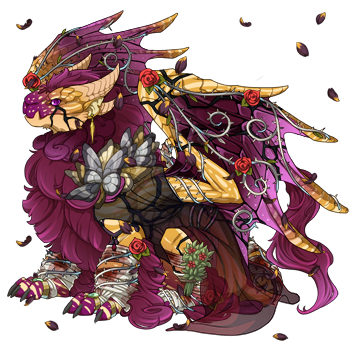

i call this one "what if your boyfriend fell in love with the parasite that infected him" or "contender for the worlds most fatal throuple" if i'm feeling frisky
#talks about flight rising on my main blog because my frising blog is desolate and lonely#their names in order are diptera / moor / asclepius#with diptera as the parasite. moor as the host. and asclepius as the healer#moor and asclepius were together before all this happened but things are kind of blowing up now#mmmmmmmm... frising ocs...#sometimes im like mann i have no ocs am i lame. and then i remember my dozens of flight rising dragons#that all have intricate relationships and lore and dynamics#okay i spent literal hours putting these guys' outfits together. they are not even gened. i still have to acquire the clothes#but i have such a bad headache we are going to BED soon after i finish my Night Tasks#quincy.txt#frising
11 notes
·
View notes
Text
Fate Fanservant: Beelzebub, the Breeder of Chaos (Beast IX:D [Diptera])


(Picrew link, these designs are nowhere near final)
Ascension Stages:
First Stage: A tall, pale, rail-thin man with short, wild black hair and a pinstriped suit. Small flies buzz around him. Think your typical Tumblr sexyman, but he’s been stretched like taffy and hasn’t showered in months.
Second Stage: Beelzebub now wears a much more extravagant suit that combines various patterns and headache-inducing color combinations. His hair has grown out, his eyes are now compound and he’s gained a dad bod. The flies are about fist-sized now.
(I'm not sure about the dad bod, TBH. Apparently he sometimes represents gluttony and also I wanted to come up with a Heroic Spirit who has a dad bod, but I don't know if this comes across as fatphobic since he's, you know, Beelzebub)
Third Stage: Beelzebub now has the head of an actual fly, with the flies surrounding him having donned his second-stage head. He has swapped his clothes out for tattered robes and a hooded cape, although he makes a point to keep the hood down.
Theme:
Stages 1 and 2: Such Horrible Things — Creature Feature
Stage 3: Coup d’État — Ghost and Pals
Traits:
Class: Beast
Alternate Classes: Alter Ego
True Name: Beelzebub
Source: Old Testament
Region: Israel
Alignment: Chaotic Evil
Attribute: Beast
Also known as: Baʿal Zebub, Beelzebul, Belzebuth, the Lord of the Flies
Voice Claim: Will Wood
Traits: Bestial (thank you, @300iqprower!), Demon, Demonic (seriously, why are there two of them), Demonic Beast, Enuma Elish Nullification, Non-Hominidae Servant, Servant, Wild Beast (3rd Stage only)
Parameters:
Strength: E+
Endurance: D
Agility: A
Mana: EX
Luck: B
NP: B
Passive Skills:
Independent Manifestation A--
Authority of the Beast C
Active Skills:
Nega-Stasis B
A skill that opposes and corrodes the status quo. So long as a human can be perceived by Beast IX:D, they can and likely will have any semblance of stability ripped out from under them as the very fundamentals of their world are turned upside down.
Apply Special Defense (-50%) and Special Attack (+100%) against Human enemies.
Decrease one enemy’s Buff Success Rate by 500%.
Animal Communication B
As Lord of the Flies and second-in-command of Hell, Beast IX:D can communicate will all insects and arachnids.
Buzz of Insanity A-
With the mere flap of a wing, Beast IX:D can drive a mere mortal to madness.
Invert one enemy’s alignment. [Good becomes Evil, Lawful becomes Chaotic, etc.]
Apply Berserker class defenses to one enemy.
Noble Phantasm: Lord of the Flies — This Misunderstanding is Mine to Own
Rank: B
NP Type: Anti-City
Maximum Targets: 7
A Noble Phantasm that expands the title “Lord of the Flies” to include the 1954 British novel. The target(s) are isolated within a Reality Marble that forces them to experience up to seven months on a deserted island within the span of a minute. This Noble Phantasm’s capacity to dull the senses increases in effectiveness based on strength of the opponent’s own struggles.
Inflict Terror to all enemies (including backline).
Decrease charge for all affected enemies.
Increase own NP Gauge based on number of enemies affected.
“My Room” Line Ideas
Gilles de Rais (both), Gilgamesh (Archer, Caster), Elizabeth Báthory (Lancer), Martha (Rider and Ruler), Mephistopheles, Asterios, Jeanne d’Arc (Ruler and Summer), Elizabeth Báthory (Halloween), David, Cú Chulainn (Alter), Angra Mainyu, “Pharaoh” trait Heroic Spirits, Enkidu, Circe, Abigail Williams (both), Junao, Ashwatthama, Asclepius, Paris, Salome, Caren C. Hortensia, Oberon, Elizabeth Báthory (Cinderella), Martha (Santa), Grigori Rasputin, Aesc the Savior (Stages 1 and 2)
#soulbonds don't look#bugs#spiders#fate/grand order#fate franchise#f/go#my fanservants#beast ix:d (diptera)#ask to tag
7 notes
·
View notes
Text
POSSIBLE BEST TUMBLR BUG COMPETITION 2023 CONTENDERS/CANDIDATES
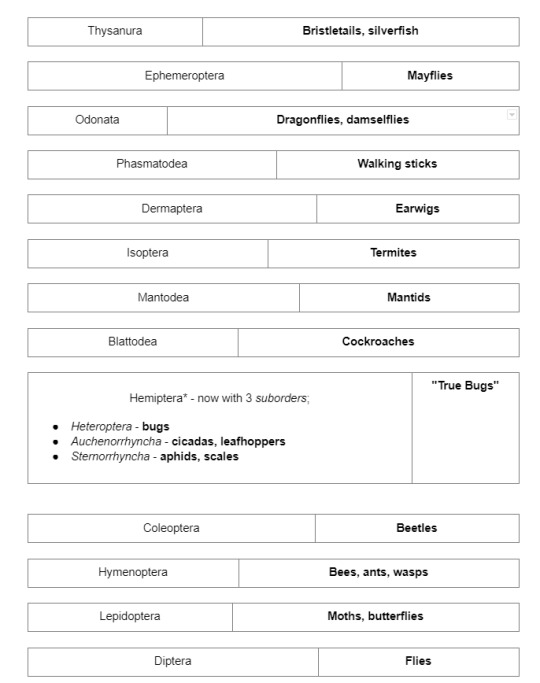

#Best Tumblr Bug Competition 2023#bugblr#bugs#entomology#insects#beetles#moths#butterflies#bees#ants#wasps#polls#bug tournament#mantids#mantises#mantis#lepidoptera#coleoptera#diptera#all of the other bugs/orders i did not list
36 notes
·
View notes
Text
I'm so sorry to have to tell you this, but mayflies are, in fact, not flies.
I have just learned that Mountain Goats are NOT, in fact, actual Goats.
#they're an entirely different order of insects#Ephemeroptera vs Diptera#also I'm seeing stuff about junebugs in the replies#and you guessed it#june bugs are not technically bugs
199K notes
·
View notes
Text
Im still so mad about the fact im kinda allergic to mosquitoes. Like im literally their no.1 defender
#not in an insensitive way#like im v aware of the havoc that those pesky women cause as vectors#but im very appreciative of their form and function!#i think they are so cool#diptera#*SOME of those pesky women#my beautiful diverse order <3
1 note
·
View note
Text

The loverssss
1 note
·
View note
Text
BUG AHEAD!



Meet my little bathroom friend Claudia! She is a bathroom moth fly (aka Clogmia albipunctata) and she is so cute!!!!! She is a member of the Diptera order meaning she is a true fly, even though she is fuzzy like a moth. All these photos were taken by me :D
#this ones for the bug mutuals#Clogmia albipunctata#moth fly#bathroom moth fly#flies#fly#bugs#bug#bug cw#insects#insect#cw insects#tw bugs#tw insects
720 notes
·
View notes
Text

Just had a dream about this insect with an impossible life history. Supposedly it was in the order Diptera, true flies, and this was bizarre for many many reasons. It did not exhibit a larval stage, instead having juveniles mimicking juvenile cockroaches. It then would develop into a nectar feeding pollinator with a long extended head to reach into flowers as opposed to a proboscis. This development stage would already have forewings, and halteres, so as far as insects go it really shouldn’t be molting further.
However, it then gains sexual dimorphism, vaguely resembling termites. At this stage they are social, but not eusocial or sexual. I remember being told there was a stage after this and between the sexual adults; why there was a stage here and no where else that would make more sense, I cannot tell you. Maybe this was where the pupal stage would have gone, as little sense as that makes.
Finally, in the mature stage, the sexual dimorphism becomes far more extreme. The males become far larger, and appear to fuse their head and thorax into a cephalothorax, more closely resembling arachnids in the order Solifugae than insects, but on closer examination that would quickly fall apart. The females meanwhile take on a body more similar to that of a worker ant. I do not believe this stage to be eusocial either, but they do exhibit a high degree of sociality, traveling in large colonies similar to those of the army ants, gobbling up whatever comes across their path. I did not see any caste division or was made aware of any differences in reproduction.
So yeah, there are a TON of problems with how this dream insect would function in our world, but here is a weird fake fly. What should we call it? Let me know!
(Also pinging @humanbyweight cause I wonder if she’d have any ideas, hope ya don’t mind ❤️)
#fake animals#weird dreams#dream creature#bugblr#digital sketch#colored drawing#insectblr#entomology#bug art#metamorphosis#help me name this#insect drawing#dream drawing#colored doodle#doodle#insect art#my art#art#sketch#drawing
80 notes
·
View notes
Text
No I need to make a fucking post about this because I just stumbled on this paper, and this is insane.
Going to be talking about and sharing images of various insects. You have been notified.
So y'all know fleas. The little parasitic insects.

Yeah. Those guys.
Well. This study did genetic analysis on fleas (and several other insects) to find out what these guys derive from. Because up to this point, fleas have been just these weird little things in their own order that are... somewhere??? in the Antliophora clade. Previous scientists have thought maybe they're some weird offshoot of Diptera (true flies), because they do actually have vestigial little wing casings.
But this study, and the genetic analysis they did, revealed that fleas are not especially similar to Diptera. They're actually most similar to Mecoptera. Scorpionflies.

That's right. These guys.
Which is completely and utterly insane to me. You're telling me these big, super unique and specialized, weird-ass bugs, somewhere down the line, created an offshoot of these tiny little insects that lose their wings in favor of hopping around, that parasitize vertebrates and feed on blood? Scorpionflies did that??
Idk this is just. So so interesting to me. The Big wide beautiful world of entomology.
Here's that study. I think you'll have to make an account on the site in order to read it (though I can also just send any interested folks the file I downloaded, since I successfully made an account), but it is SO fascinating.
#i was trying to acces this site for acarology articles for a future paleo class project btw#the prof asked what topic we wanted to do a 15 minute oresentation on and i was like. can i do paleoacarology pleaseeeee#and he was like “if you can find enough material to talk for 15 minutes then sure”#so i was like “yeah bet”#so now i'm looking for fossil mites :]#this was a side-adventure that fascinated me completely#anyway#entomology#bugblr#bugs#fleas#scorpionflies#scientific research#scientific paper
73 notes
·
View notes
Text


Range: Every continent except from Antarctica
#poll#Class: Insecta#Order: Diptera#Family: Muscidae#Genus: Stomoxys#Stomoxys Calcitrans#Range: Nearctic#Range: Palearctic#Range: Afrotropical#Range: Indomalayan#Range: Australasian#Range: Neotropical#bug tw#insect tw
18 notes
·
View notes
Text

Name: Gnat Attack
Debut: Mario Paint
I love flies! Diptera is my favorite insect order! But the world as a whole does not love flies. Just look at Flyswatter. An entire genre of item that exists to try and kill flies! It would be nice if everyone could love flies while still being reasonably careful about the biting and disease-spreading one, but at least the prevalence of fly swatting means I get to talk about some Weird Mario Flies!

Fly is the most basic fly. I wouldn't want anything else for this role! A classic gray housefly who will land on your food and rub its hands together. One of the most charismatic fly behaviors! It looks like they're scheming, but they're really cleaning their hands when they do that! It would be nice if they did it before landing on your food, but they're not being rude on purpose... or are they?! (they are not. They are not smart enough to do that)

Fly does not have interesting behaviors and in fact cannot even attack the player, but the most interesting thing about it, to me, is their relationship with Munchers! If a Muncher is shaken enough in Super Mario Maker, flies will come out, and swatting them is the way to start the Gnat Attack minigame. But why here? Why Muncher? I guess it's because of the Venus Fly Trap inspiration, and compared to standard Piranha Plants, Munchers look more like they would catch bugs, rather than tear meat from bone. Perhaps this is rudely shaking out the Muncher's meal! That's not nice! And then the player most likely just wants to swat the fly. What a waste! At least eat it.

Big Fly is the first dangerous one, and can attack the hand that holds the flyswatter! What's it going to do? Spread pathogens? Suck blood? Fly into your eye and make you blink a lot? None of those things! It will fire Projectiles. Its shiny green exoskeleton brings to mind the green bottle fly, which does not have any Projectile Attacks as far as I know.
I don't know why, but Big Fly is the only one from the original game to not return in Super Mario Maker. Maybe its attack pattern didn't work well with the new control method? It DID feature in the pause menu, return in the WarioWare version of Gnat Attack, and even get to be on the title screen there! Maybe all that went to its head, and it started demanding too much. A rabbit carcass all to itself at the snack break area. That's just too much rabbit carcass! You're not too good to eat at the same rabbit carcass as the rest of us!

Fly Parent is my favorite one! For many reasons! This is not Fly Mother. This is a non-binary parent birthing insects out the wazoo! Representation Win! I'm glad it's yellow, because that reminds me of hoverflies, my very favorite flies! The sweet little slurpers who just want to drink nectar, and mimic bees and wasps for protection! As babies, though, they are voracious predators, and Fly Parent differs in this regard.

Instead of larvae, Fly Parent gives birth directly to Fly Children! These have the most basic fly design possible, but their circumstances are interesting enough to compensate! I assume you know that flies, as with many insects, hatch from an egg as a larva, then later become a pupa, and finally emerge as a winged adult. Fly Children, however, appear to be these very winged adults, and also look nothing like Fly Parent! There are a few possible explanations.
One: Fly Parent is artificial. Its abdomen is bizarrely shaped, and honestly rather artificial-looking. It is not a true fly, but a transport for a fleet of real, tiny flies.
Two: Fly Parent is PARTLY artificial. It has an artificial womb to raise young in, allowing them to undergo complete metamorphosis inside, feeding the larvae with mechanical bug milk. As for the children being so small... they're premature? I don't know!
Three: Fly Parent is an adoptive parent to the Fly Children, and has a great relationship with its countless adult children of a different species.
I think any of these is a pretty great option! I'd be happy with any of them being confirmed if Nintendo ever does a Reddit AMA to answer Mario lore questions!

Fly Bomb is what it looks and sounds like. A fly, that is a bomb! A Bob-omb, specifically, since this is Mario. I always get a kick of how this style and color of eye often denotes a bomb in this franchise. There are ants and termites that are able to explode and sacrifice themselves for their colonies, so maybe if there were eusocial flies, Fly Bomb could become real! Hopefully it would be spherical with a string fuse, too! Bob-omb is a flawless design, and it has even fewer flaws when it is also a fly. I think, lore-wise, this could have been the creature to inspire the creation of Bob-ombs in the first place!

Finally is King Watinga! The big bad robotic fly who is like, leader of the flies or something? I don't know. I don't think this entire insect order has a single leader, between you and me. But someone made a robotic fly and it's mean. King Watinga is capable of spawning Fly Children, which I think backs up the Artificial Fly Parent theory! I don't care much for his design, but it is so silly for there to be a Boss of the flies, a Mastermind behind a mildly annoying buzzing. It's an organized thing! Also, I don't know why he is named King Watinga. Watinga is a last name most common in Papua New Guinea, and I have no idea why a robobug is named it! Does anyone know? Will anyone tell me? Please? Thank you
#gnat attack#mario paint#super mario maker#fly#big fly#fly parent#fly children#fly child#fly bomb#king watinga#mario#mario enemies#mod chikako#warioware#warioware inc mega microgames
98 notes
·
View notes
Note
Do you have information about "lovebugs?" (2 bugs attached end to end) I have only ever seen them in Southern Louisiana and Southern Mississippi. I'm from South East Louisiana and there use to be "Lovebug" season every year. There would be so many that it was difficult to see. The bugs were so delicate that just barely touching them, smeared them onto clothing and cars, etc. For some years now love bug season doesn't exist. I hardly see them anymore. Do you know why?
Thanks in advance!
Lovebugs (Plecia nearctica), family Bibionidae, order Diptera, found in the SE US, Mexico, and Central America

Lovebugs are in the Marchfly family, a family of true flies.
Lovebugs seem to have up and down years, their populations go through periods of boom and bust. I have seen huge swarms in Spring and in Fall.
In the US, they are most common along the Gulf Coast states. We get them here in Houston commonly.
Lovebugs are in the Marchfly family, a family of true flies.
Lovebugs seem to have up and down years, their populations go through periods of boom and bust.
In the US, they are most common along the Gulf Coast states. We get them here in Houston commonly.
The adults feed mainly on nectar, the larvae feed on decaying plant material.
photograph by Wikifrosch
89 notes
·
View notes
Text

Today's anime insect of the day is: A fly from Vinland Saga
Order: Diptera
family: Muscidae
52 notes
·
View notes
Text
i can only put ten answers so i am sorry to everyone i could not represent!
1K notes
·
View notes
Text

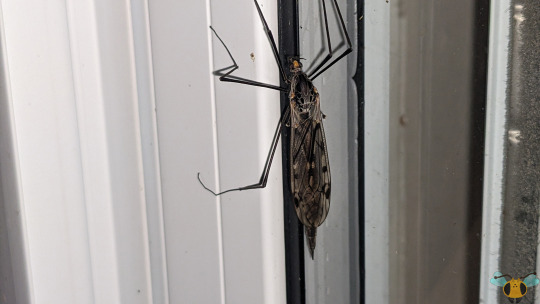







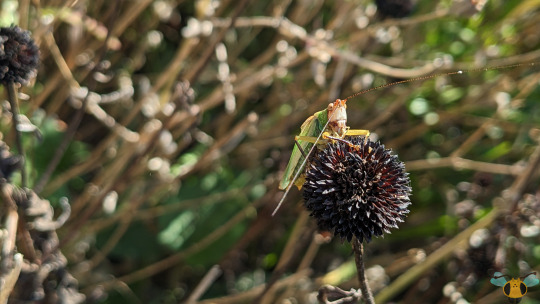
Insect Highlights of 2024
With the new year celebrations scheduled for this weekend, I thought it best to share some of my favorite insect specimens from this year, rather than one single typed of insect. The pictures here haven't been uploaded to the blog in a post, so today they can all share the spotlight. There are many familiar faces here and all of them are incredible and beautiful creatures. Hopefully there are even more insect delights and finds to enjoy in the upcoming year. To ring in the new year, we have the following insects:
Four-Spotted Skimmer - Libellula quadrimaculata - Order Odonata (May 24th)
Giant Crane Fly - Tipula metacomet - Order Diptera (September 16th)
Spring Fishfly - Chauliodes rastricornis - Order Megaloptera (May 27th - from Muskoka)
Milkweed Aphids - Aphis nerii - Order Hemiptera (September 3rd - alongside German Yellowjackets)
Oil Beetle - Meloe campanicollis - Order Coleoptera (October 21st)
Fall Webworm Caterpillars - Hyphantria cunea - Order Lepidoptera (July 25th)
Great Golden Digger Wasp - Sphex ichneumoneus - Order Hymenoptera (July 1st)
European Earwig - Forficula auricularia - Order Dermaptera (September 21st)
Common Red Soldier Beetle - Rhagonycha fulva - Order Coleoptera (July 1st)
Black-Legged Meadow Katydid - Orchelimum nigripes - Order Orthoptera (October 27)
All pictures here were taken in 2024 with a Google Pixel 4.
Wishing everyone a Happy New Year and a marvelous 2025! Thank you everyone for making this another beautiful year of insect observations! I hope to reach even more of you this year with many more wonderful insect pictures and videos. Enjoy your celebrations!
#jonny’s insect catalogue#yearly insect highlights#ontario insect#fly#dragonfly#fishfly#earwig#caterpillar#katydid#aphid#beetle#wasp#toronto#giant crane fly#four spotted skimmer#tipula metacomet#spring fishfly#milkweed aphid#oil beetle#fall webworm moth caterpillar#fall webworm caterpillar#great golden digger wasp#european earwig#common red soldier beetle#black legged meadow katydid#happy new year#happy new year 2025#2024
20 notes
·
View notes